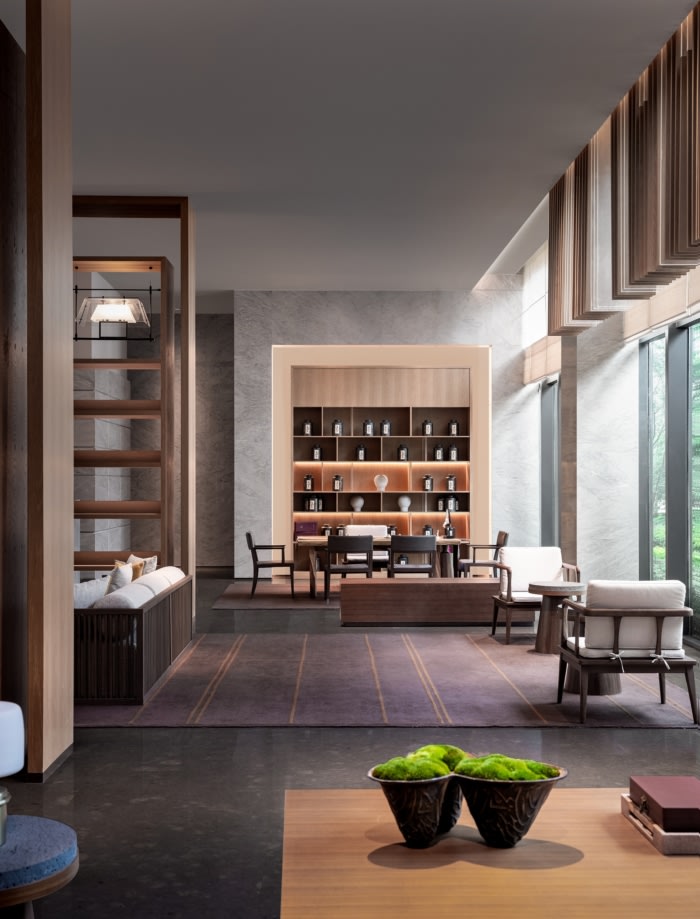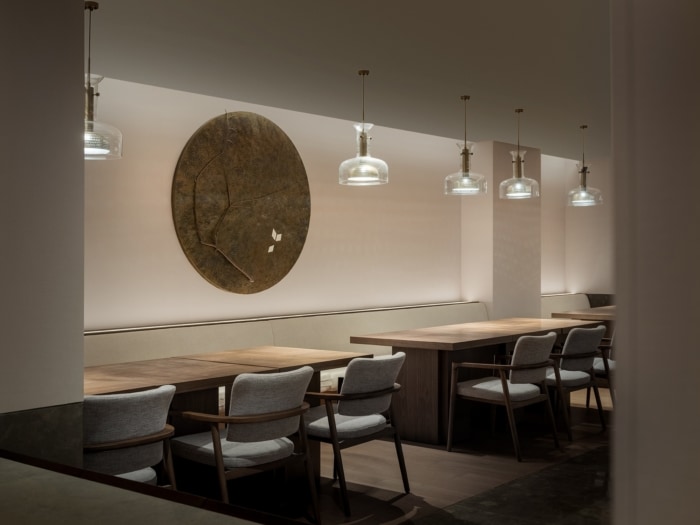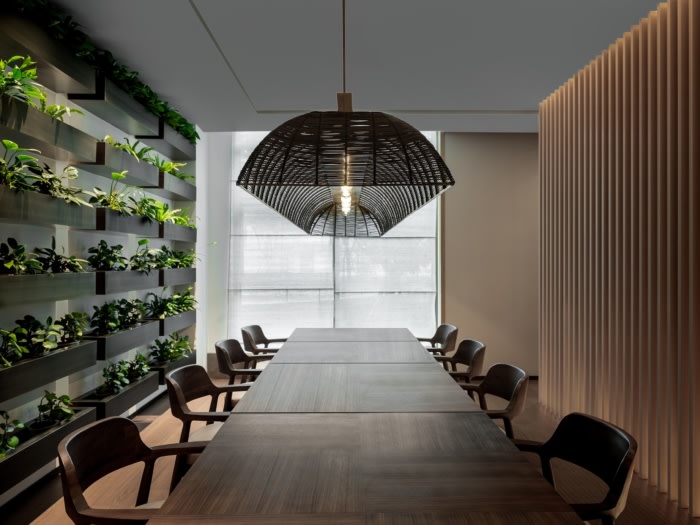Grand Wuji Hotel
CCD/Cheng Chung Design created a space that reflects nature and sophistication at every turn for the Grand Wuji Hotel.
A repository of history, a new chapter of future
Grand Wuji Hotel is near Tianlong Temple, the tranquil environment of which creates a peaceful Zen world away from the hustle and bustle. This kind of quietness and leisure sets the tone for the design intervention for the project.
The interior design inherits the plainness, tranquility and elegance of the architecture and landscape, and meanwhile creates varied scenes in different functional areas. The history of Nanjing is the underlying keynote, inviting people to unwind while perceiving the heritage of the city. Through the subtle arrangement of lighting, materials and textures, as well as the contrast of light and darkness, an engaging, impressive experience is created.
The cycle of five seasons composes poetry
There are blossoming flowers in spring, round moon in autumn, cool breeze in summer, and snow in winter. The best time is when there is no annoyance in mind. When the mind is not bothered, all things tend to be elegant.
Sprouting in spring, growth in summer, transformation in late summer, harvest in fall, storage in winter. With the cycle of the five seasons throughout the year, the mind becomes more clear and elegant. With a philosophy close to Zen, one turns to seek inner peace rather than extravagance.
Here, the guests cannot help but get into a Zen state of the mind and wander away from the disturbing affairs of the mundane world, shed all restlessness and agitation, and immerse themselves in a secluded world to purify the mind.
At the entrance, the lush green trees are vigorous and unrestrained, with the swaying shadows effusing the essence of Zen.
The elegant wooden elements are arranged in an orderly manner to create a serene rhythm.
Water, stone and plants in the courtyard form a natural Zen landscape. The design deepens guests’ multi-sensory experiences in this place by building an interactive and fluid relationship between the interior and outdoors. In this way, the spatial narratives are formed.
Walking through the winding passage and the long corridor, guests will feel the serene Zen atmosphere blowing away confusion in the mind like a breeze. Even the most restless heart will be calmed here. In this serene and transparent environment, people only need to feel and to gain strength in their solitary moment.
Leisure state of mind, resonance with Zen
The whispering of “Zen” in the vegetarian restaurant reaches guests’ hearts soundlessly. The interplay between “the virtual” and “the real”, as well as the harmony between “dynamism” and “stillness”, implicitly incorporate the unrestrained spirit of Oriental art into the expressive details. Ultimately, the spiritual cores of “clearness, integrity, harmony and elegance” are reproduced in the space.
The quintessence of nature is metamorphosed into a scenario of Zen. The natural texture of wood, expressed in the form of wooden grilles, is integrated into the space and complements each other. The veil and soft lighting render a pure realm of vagueness and openness.
The pendent ceiling lamps show a restrained gesture and staggering heights. The soft primary colors soothe the mind, making one feel open-minded, emotional, pure and peaceful…
The greenery teeming with natural vigor breaks the boundary between “human” and “nature”. Low-saturation colors tone up the gentle elegance of the space. The tables and chairs are simple, mellow and plain.
The banquet hall abstracts the image of “birds’ nest”, manifesting the concept of “nest and union”. A large art installation made of wooden pieces showcases extraordinary appeal.
The rippling water seems as if floating above the mist, hidden among the mountains. In this colored “landscape painting”, the water is brimming with rays of sunshine.
Design: CCD/Cheng Chung Design
Photography: Qiu Xin, Su Shengliang
























Now editing content for LinkedIn.